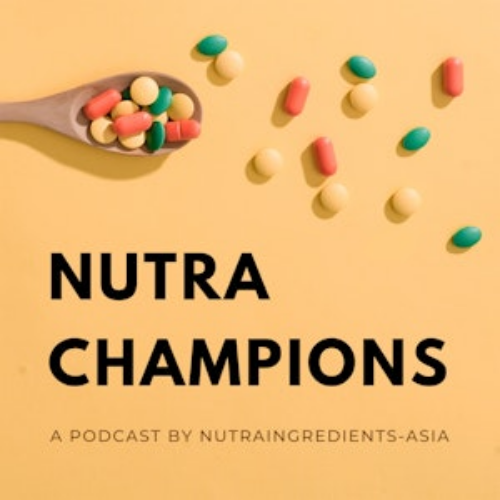Synbiotic formula restores gut microbiota in C-section delivered infants – Danone-funded trial

The four-month double-blind RCT looked at whether the consumption of a synbiotic formula, a prebiotic formula, and a control formula with neither prebiotics nor probiotics could restore gut microbiota in infants born via c-section.
Changes in their gut microbiota were compared with the reference group – which consisted of infants born via vaginal birth.
The prebiotics formula consisted of two prebiotics: short-chain galacto-oligosaccharides (scGOS) and long-chain fructo-oligosaccharides (lcFOS), while the synbiotic formula contained both prebiotics and the probiotic strain Bifidobacterium breve M-16V.
Writing in BMC Microbiology, the study was conducted by researchers from Danone Nutricia Research, Genome Institute of Singapore, Singapore Centre For Environmental Life Sciences Engineering (SCELSE), Bioprocessing Technology Institute, and two hospitals in Singapore and Thailand.
The researchers said that similar findings were seen in an earlier study by Chua et al and that the same nutritional intervention was associated with a lower incidence of eczema and atopic dermatitis in infants.
In this Danone-funded study, a total of 153 infants born via c-section were randomised into the three study groups.
They were exposed to intrapartum antibiotic prophylaxis (IAP), which is the common clinical practice in Singapore and Thailand, while infants from the reference group were not exposed to IAP.
This is an important to note as existing studies showed that IAP could delay gut colonisation by Bifidobacterium – which is found in abundance in babies vaginally born.
IAP could also increase the count of Enterobacteriaceae not found abundantly in babies vaginally born.
The above two points were proven in this trial.
A hypoxic and acidic gut environment characterised by an enrichment of strict anaerobes, specifically Bifidobacteriaceae and Bacteroidaceae, was observed in the reference group.
In contrast, all infants born by c-section displayed a compromised microbiome driven by an enrichment of Enterobacteriaceae.
The abundance of Enterobacteriaceae was statistically significantly higher in the control group compared to the reference group at day 5, where the p-value is 0.020.
We’ll be shining the spotlight on Infant and Maternal Health in our Growth Asia 2021 interactive broadcast series, featuring expert insights from a host of big-name brands and world-renowned experts, including Danone, Morinaga, and TurtleTree. Register for free here.
Synbiotic restored gut microbiota
When fed with the synbiotic formula, the gut microbiota in infants delivered via c-section started to mirror those born via vaginal birth, the research showed.
In fact, synbiotic supplementation resulted in an anaerobic gut microbial environment characterised by an enrichment of Bifidobacteriaceae as early as day three.
By week two, the synbiotic and reference group did not differ in gut microbiota composition.
In contrast, infants from the control and prebiotic groups presented a delayed colonisation by strict anaerobes when compared to the synbiotic group, and their difference was statistically significant between day three and week two of the study.
Ordination plots also showed that the taxonomic composition of the synbiotic group was distinct from the control group as early as day three and this continued into day five and week two.
As for the prebiotic group, it did not differ significantly from the control group.
Comparisons showed that Bifidobacterium was the main genus that separated the synbiotic from the control and prebiotic groups.
Effect of probiotic
The findings showed that the probiotic strain used in the synbiotic formula played the vital role of normalising the gut microbiota in infants born via c-section.
“The single probiotic strain within the synbiotic normalised the species diversity by restoring the Bifidobacterium genus levels without impeding the colonisation and expansion of endogenous Bifidobacterium species and other bacterial taxa.
“Bifidobacterium appeared as the key driver in modulating anaerobiosis through the production of organic acids, and the resulting acidification of the intestinal milieu. We hypothesise that the presence of Bifidobacterium in the first days of life is paramount to the establishment of gut anaerobiosis,” the researchers said.
Role of Bifidobacterium
During natural birth, Bifidobacterium is transmitted from the mother to the infant and it is an early coloniser of the infant gut.
“The transmission of Bifidobacterium during natural birth and breastfeeding highlights the role of the maternal microbiome in establishing Bifidobacterium as a paramount early coloniser of the infant gut.
“The presence of Bifidobacterium in maternal faeces, vagina and breast milk has been documented and supports its key biological role in establishing the anaerobiosis in early life,” the researchers said.
Bifidobacterium in turn metabolises human milk oligosaccharides (HMOs) found in mothers’ milk.
As such, metabolomic analyses of pooled faecal samples showed lower levels of lactose and HMO species in the synbiotic and the reference groups.
In contrast, in the prebiotic and control group, the lack of Bifidobacterium supplementation and the delayed colonisation by Bifidobacterium meant that HMOs taken in via breastfeeding were not metabolised and absorbed by the infants.
The HMOs were in turn passed out in the infants’ stools, as demonstrated by the metabolomic analysis of the faecal samples.
“The delayed colonisation by Bifidobacterium sp. was correlated to a depletion of genes involved in milk carbohydrates metabolism.
“This impaired transmission of Bifidobacterium seemed to be reflected by an enrichment of HMOs and lactose in the stool samples of C-section born infants from the control and prebiotic groups even though they also received breast milk,” the researchers explained.
They concluded that the use of a synbiotic formula could restore gut microbiota in infants with a compromised microbiome at birth.
“Our study suggests that supplementation with a specific synbiotic microbiome modulator allows the establishment of an acidic gut ecosystem devoid of oxygen in infants with a compromised microbiome at birth.
“The long-term health consequences of this early life nutritional intervention have not been assessed, however children that participated in this study are currently being followed up.”
Source: BMC Microbiology
A synbiotic intervention modulates meta-omics signatures of gut redox potential and acidity in elective caesarean born infants
DOI: 10.1186/s12866-021-02230-1
Authors: Lay C et al




















